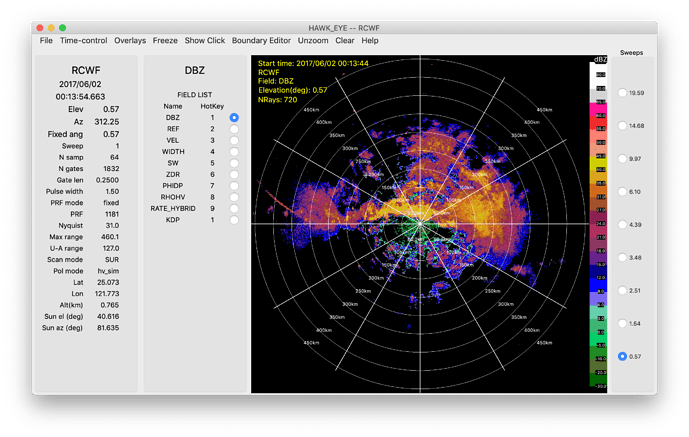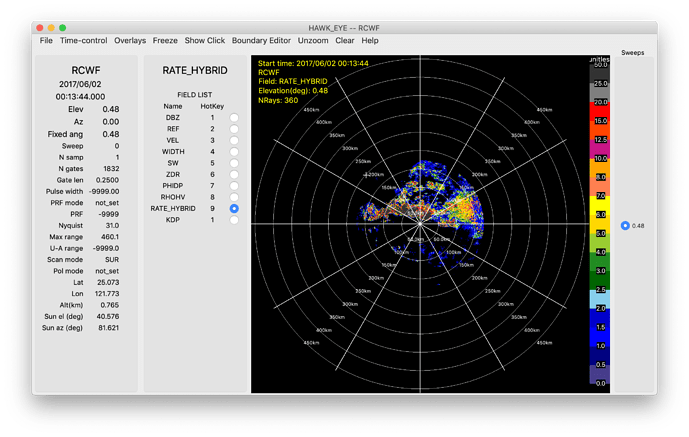A temporary link to the data shown in the AMS tutorial can be found here.
Sample workflow
This workflow will convert a raw radar file to cfradial and calculate the rain rate. Note, the current parameter files are currently optimized to work on Unix systems. Edits coming soon to run through docker.
- Download .gz file
- Extract contents into the desired directory
tar -zxvf radx_test.tar.gz - In /radx, edit the directories in env_dirs (note: there is purposely no slash at the beginning of PROJ)
export HOMED="/path/to/home/directory"
export PROJ=“path/to/project/radx”
export RAW="/path/to/raw/radar/data" - Set the variables in the terminal and set the date
cd $HOMED/$PROJ
source env_dirs
source env_vars
export days=“20170602” - Convert file to cfradial
/path/to/RadxConvert -params ./params/RadxConvert.* -f $RAW/$RADAR_NAME/$days/*.raw * (!!! remove the space before the final * !!!) - Run RadxRate to calculate Kdp, the PID, and various rain rates
/path/to/RadxRate -params ./params/RadxRate.* -f ./convert/$RADAR_NAME/$days/*.nc - Run RadxQpe to calculate the near-surface rainfall (which is set to use the hybrid method)
/path/to/RadxQpe -params ./params/RadxQpe.* -f ./rate/$RADAR_NAME/$days/*.nc
example output of dBZ and Kdp from RadxRate:
example output of the “surface” hybrid rain rate from RadxQpe:



